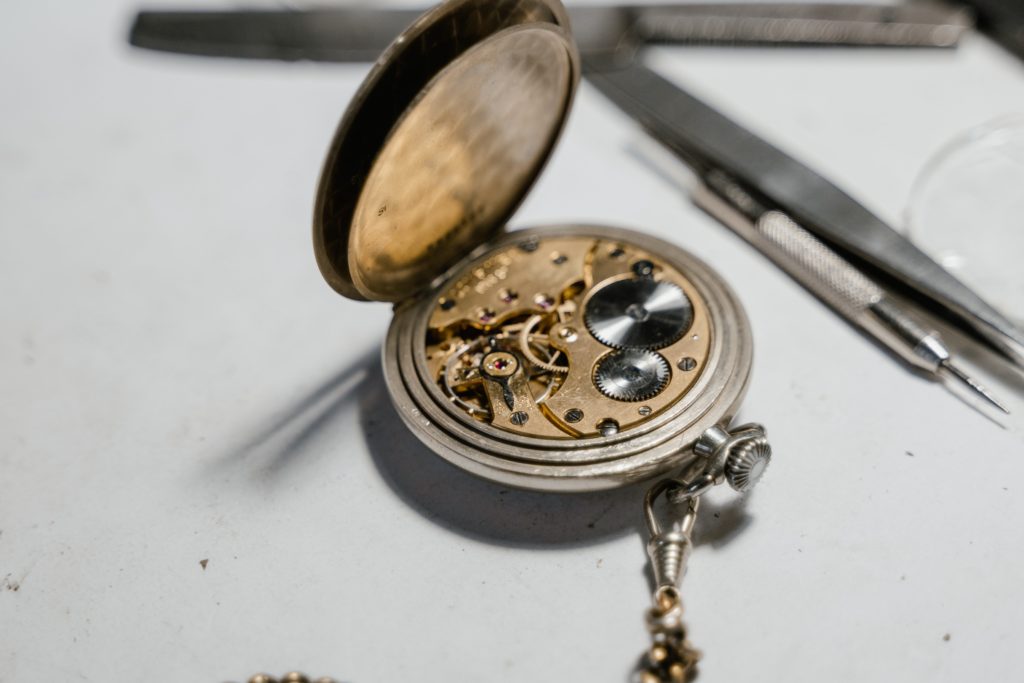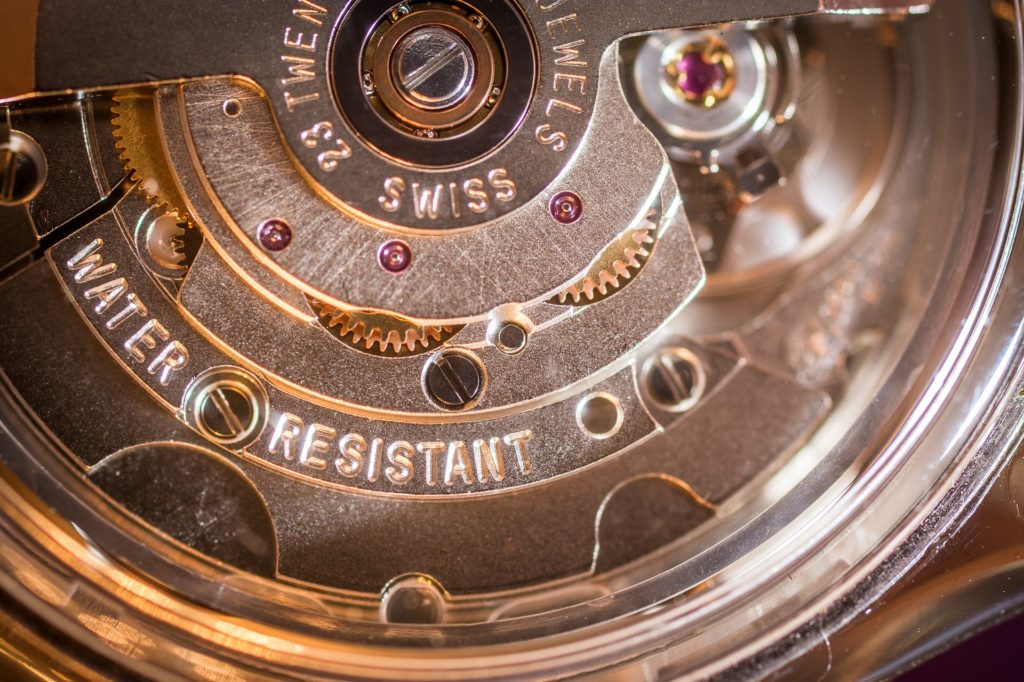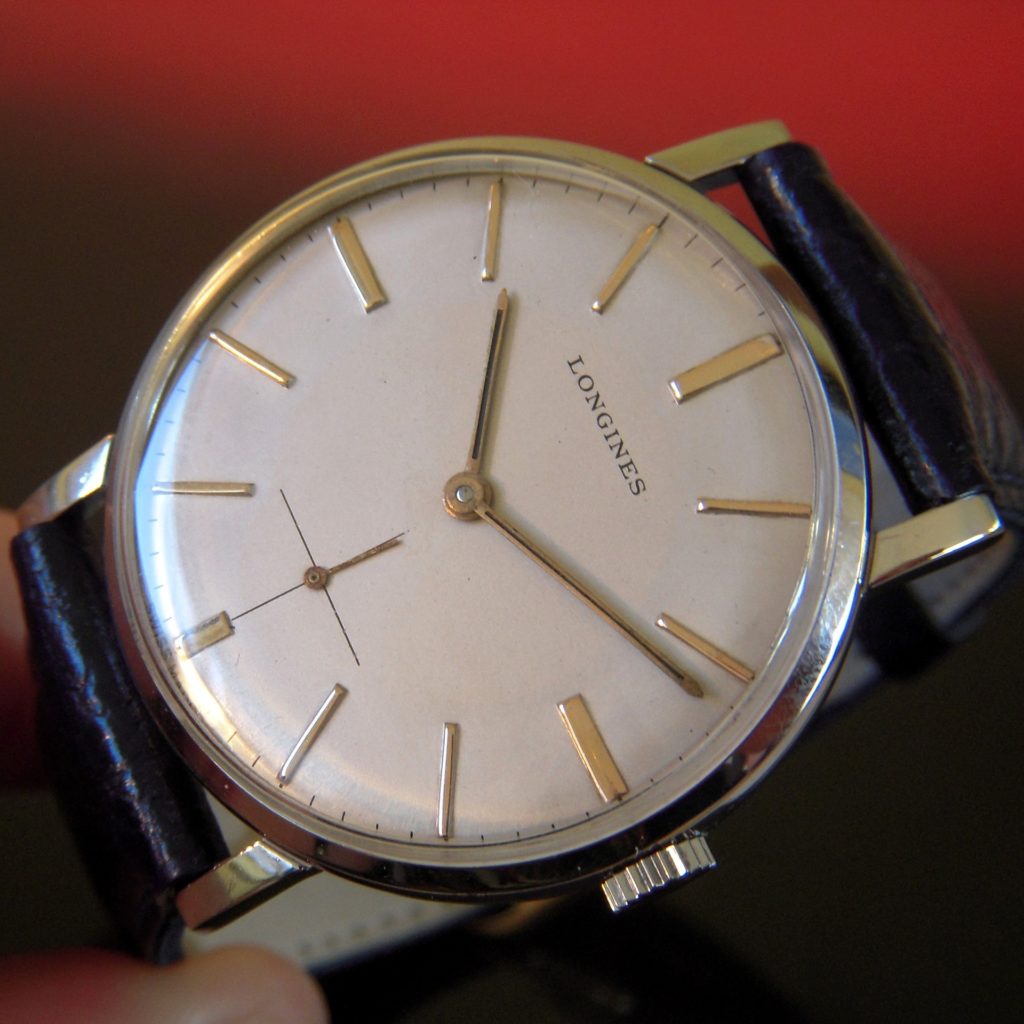Prefer to listen to us read this article? Click below.
Watches are great for telling the time; however, they won’t tell you how often they need to be maintained and cleaned. If you maintain and keep your watch clean, it will last longer and continue to look good for a long time, so you can use it to tell time until the end of time!
Some of the most essential aspects of watch maintenance include cleaning, servicing, and routine upgrades. The main reason to maintain your watch is to keep it ticking as long as possible. Different parts of the watch require different types of cleaning and maintenance, and every watch is different.
While it can be intimidating to take care of a watch yourself, once you have the correct materials and learn what to do, it is a fairly simple task. If you don’t feel comfortable cleaning and servicing your watch, you can always search for a certified technician in your area to do it for you.
Main Reasons for Watch Maintenance
Not many people instinctually think to routinely maintain their watches. If your watch is starting to look a little tattered or not ticking correctly, it’s definitely overdue for some maintenance. Some of the most common reasons for watch maintenance are:
- The oil dries up and the watch stops running.
- The watch starts to smell bad. Some watch straps are made of cheap material that begins to smell bad when unclean.
- The watch hands aren’t moving. The watch has stopped ticking or has become too slow. This can be a sign of watch depreciation or that the batteries need to be replaced.
- Water damage: When wet, the watch stops ticking and some parts rust damage other delicate mechanisms like gears.
If you take care of your watch then cleaning and servicing shouldn’t be necessary for quite some time; however, if your watch needs cleaning or servicing don’t try doing it yourself unless you know what you’re doing. Really, watch cleaning and servicing is a job for professionals who know what they’re doing – otherwise you may risk damaging your watch.
Servicing Your Watch
Cleaning and maintaining your watches can be an extremely tedious task. If your hands aren’t steady, you can easily permanently damage your watch. It is usually the best option to take your watch in to be routinely serviced. In the long run, it may be cheaper and it will give your watch a longer wrist life than having to get a watch repaired.
Some common repairs and services for watches are:
- Replacing the watch glass that protects the face if it becomes scratched.
- Replacing the band, which is more commonly done with leather and rubber bands that aren’t properly taken care of.
- Timekeeping isn’t accurate, such as if your watch is going too fast or slow.
Besides extending the life of your watch, servicing your watch by a professional will also put your mind at ease about any possible problems your watch could encounter. When you service your watch, the servicer will check for any problems and replace parts as needed.
Replacing Watch Batteries
It’s usually easy to replace a watch’s batteries. Quartz watch batteries tend to last one to three years. The battery life largely depends on how many functions the watch has: the more functions, the shorter the battery life.
The best way to do this yourself is to use a watch screwdriver to remove the watch gasket. Next, use plastic tweezers to remove the dead battery and place the new battery in the watch.
If you can’t replace your watch’s batteries yourself if your hands aren’t steady or you don’t want to take the risk, you can always take your watch to a professional servicer to change them for you.
It’s essential you replace your watch batteries once you notice your watch has stopped. If you keep the batteries in too long while they are dead, you can risk corrosion inside your watch, which is irreversible.
How Often to Perform Watch Maintenance
Even if it’s been quite a while since you’ve last cleaned or serviced your watch, it’s rarely too late to start. Once you do start cleaning and maintaining your watch, you should make it a habit to follow up with maintaining your watches every three to five years.
You can also take precautionary measures and simply keep your watch clean by routinely wiping it down with a microfiber towel to prevent dust, dirt, and oil from building up on the watch. The buildup can cause damage to the exterior and make the watch vulnerable to interior damage.
If you wipe down your watch at least once a week or as it gets dirty, you will become familiar with your watch to know if your watch has any new signs of damage or depreciation. If you notice these things, you should carefully clean your watch according to the guide below, or take it to a professional to be serviced.
Cleaning and Maintaining Watch Parts
There are three main components of a watch: face, band, and bezel. Each part needs cleaning in order to prevent damage to the watch while keeping it looking nice. You should clean one area at a time so you don’t mix up the dirt/dust/sweat throughout the watch since they’d be hard to distinguish.
There are some essential cleaning supplies you’ll need to properly clean your watch, such as:
- Watch cleaning cloth to clean the face of the watch
- Watch brush to gently dust away particles in between watch parts
- Soft towel to gently wipe down watch components or to hold the watch pieces on so they don’t travel while you work.
- Distilled water, because tap water has too many minerals in it for your watch parts to function properly once the water dries out.
- Watch stand to prop your watch on to dry out
- Magnifying glass to see and keep track of small pieces and to enhance your vision while you work.
You can find watch cleaning supplies at watch specialty shops or online from various retailers. After getting all of these items put them on your work surface where they’re easy to access but still leave enough room for you to work with the watch itself without losing parts.
Cleaning Your Watch and Taking it Apart
Before you start watch maintenance, make sure the watch is not still ticking. If it is, wait until the watch stops. It’s very easy to break your watch when you’re trying to clean it; however, if you don’t stop the watch before you begin cleaning it then you risk losing watch parts or damaging them beyond repair.
Next, remove the watchband by pushing buttons or releasing clasps that hold the band closed. Watchbands usually have to be removed this way because different types of watches use different types of attachments. The easiest method for closing watchbands is hooking them closed with spring bars which are inserted into slots inside the lugs at either end of the watch.
Then, remove the watch case using a watchmaker’s watch screwdriver, which has teeth on the end that fit into the watch latches to secure the watch inside the watch case. Be careful not to scratch the watch finish or surrounding area when removing the watch case. If working with pocket watches, simply open the lid of your watch by pushing down on the latch and lifting up.
Cleaning and Maintaining the Face
The face of your watch is the part that tells you the time. It is protected by a watch glass, and usually covered by a watch bezel or watch crystal. The watch glass can easily become scratched and should be protected from sharp blows by using protective watch glasses.
Watches with large exposed faces with multiple dials are particularly susceptible to damage and dirt build-up on the face.
Once you’ve disassembled your watch, cleaning the face is a fairly simple, yet delicate process. To clean the watch face, you’ll wipe the face of the watch off with a watch cloth or a watch brush. Be very careful doing this, because you can damage the hands of the watch. Wiping the face of the watch with a watch cloth will remove any dust that had gotten onto the watch.
Cleaning and Maintaining the Band
Cleaning and maintaining the watch band will largely depend on the material your band is made up of. Some of the most common watch band materials are:
- Leather
- Metals such as gold, silver, and stainless steel
- Rubber
Don’t worry about watch maintenance or cleaning if you have a watch with metal bands, even if it’s gold. Gold is very resistant to corrosion and rusting, so all you need to do is wipe down the watch every once in a while just to be safe. If you have a watch that has rubber bands or leather watchbands, then things get a bit more complicated.
Rubber bands should be kept clean because they’re made from various plastics and chemical compounds which can deteriorate quickly under ultraviolet rays. Leather watchbands also take a beating when exposed to the elements; dirt particles cling readily to leather because oil causes skin particles to cling together.
Cleaning and Maintaining the Bezel
The bezel is the ring around the watch that holds the watch crystal in place. Different watches have different material bezels, and bezels with different functions, such as a compass.
Cleaning your watch bezel will largely depend on the material it is made of. Most bezels can be cleaned with a bit of warm water and a mild detergent. Be sure the bezel and crown are secured in place to prevent water or soap from entering the watch.
If your watch is water-resistant and has a rotating bezel, ensure that after exposing the watch to saltwater or hard water, turn the bezel to prevent salt or minerals from getting stuck in the bezel.
Maintaining the Crown and Winding and Setting the Watch
The crown is the button you use when setting your watch (the button on the side of the watch). Usually, when you pull out this crown it will either be pushed in (in which case you’ll need to “unlock” it) or simply loose (in which case you’ll need to press it in again before winding the watch).
If you have a waterproof watch, make sure that you don’t loosen the crown in a wet or humid environment. Even though the watch is waterproof, getting water stuck inside the watch from the crown can lead to permanent damage.
Winding and Setting the Watch
Winding and setting a watch will be different depending on the type of watch you have.
If you have a mechanical watch, you should wind and set your watch at the same time each day. Do this carefully, because you can damage the crown if you try to over-wind. You’ll know if your watch is wound when the crown stops turning.
If you have an automatic watch, you should turn the crown twenty to forty times every two weeks. If your crown has to be screwed down, ensure that it is screwed tightly to prevent water, dirt, and oil from getting stuck in it.
Smartwatches
Smartwatches have become all the rage lately, especially with people staying connected to the internet and monitoring their health. Maintaining and cleaning certain parts of smartwatches will follow the same as a regular watch, depending on the material your smartwatch is made of.
As for the bands, many smartwatches have the same materials as a regular wristwatch. You should maintain them accordingly. The smartwatch face can simply be wiped down with a microfiber cloth to prevent and dirt build-up. To sanitize a smartwatch, use an alcohol wipe or dampen a light cloth with rubbing alcohol and wipe the smartwatch.
As for servicing and maintaining your smartwatch, it is much easier to do things yourself. Firstly, ensure your watch has all the updated firmware depending on the manufacturer’s instructions. If you notice any problems with your smartwatch, you can always contact the manufacturer to guide you on how to fix your smartwatch.
Conclusion
If you’re trained or have steady hands, maintaining your watch’s health is a simple task. However, not many people have these skill sets. If you are unable to maintain your watch yourself, don’t worry. There are plenty of trained and experienced watch servicers available to help you.







